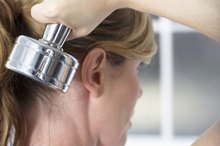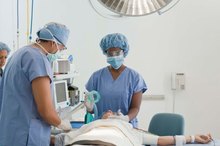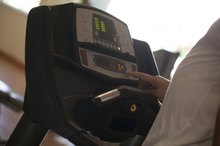Tubal ligation is a medical procedure where the fallopian tubes are cut or closed as a method of preventing pregnancy. By cutting — or “tying” — these tubes, your eggs are prevented from moving out into the uterus and fertilized. As with any surgery, there are certain restrictions recommended until you make a full recovery, especially when it comes to exercise.
Cardio
After tubal ligation, you should avoid any strenuous exercise for several days. Strenuous or vigorous exercise is loosely defined as any activity that raises your heart rate near its maximum. Your maximum heart rate is 220 beats per minute minus your age. Almost any activity can become strenuous as you increase its intensity or duration, so abstain from running, swimming or even biking until you fully recover. Your doctor can best determine when you can return to your normal exercise routine.
- After tubal ligation, you should avoid any strenuous exercise for several days.
- Almost any activity can become strenuous as you increase its intensity or duration, so abstain from running, swimming or even biking until you fully recover.
Strength
The Safety of an IUD During Exercise
Learn More
The time off from vigorous exercise extends even further when it comes to strength-training activities. According to the National Institutes of Health, you shouldn’t lift anything heavy for at least three weeks 2. Stay off free weights and weight machines for this time. Better yet, wait until your doctor gives you the okay.
- The time off from vigorous exercise extends even further when it comes to strength-training activities.
Effects
One of the main reasons most medical professionals recommend these restrictions is to avoid straining the incision site. Even if the procedure is laparoscopic, which means your surgeon makes only a small incision in your abdomen to cut or close the fallopian tubes with the aid of a telescopic lens, you can damage or reopen the area where the laparoscope was inserted into your abdomen. Also, it isn’t uncommon to experience abdominal pain, abdominal cramping, fatigue, dizziness and other discomforts that can often make it difficult to exercise.
Warning
Exercise After Oophorectomy
Learn More
Contact your doctor immediately if you have a temperature of 101 degrees F or greater, warns Mayo Clinic. Do the same if you faint or experience bleeding or abdominal pain that recurs or worsens after 12 hours.
Related Articles
References
- Mayo Clinic; Tubal Ligation; Dec. 2009
- National Institutes of Health; Tubal Ligation; March 2010
- Better Health; Contraception - Female Sterilization; Oct. 2009
- Centers for Disease Control and Prevention. Effectiveness of family planning methods.
- Shoupe D, Mishell DR. Contraception. Women and Health. 2013:209-234. doi:10.1016/b978-0-12-384978-6.00015-7.
- Sung S, Abramovitz A. Tubal ligation. StatPearls. 2020.
- Premalatha R, Tripathi MS. A study on the reversal of sterilisation in women over two decades. J Obstet Gynaecol India. 2012;62(1):62–67. doi:10.1007/s13224-012-0144-x
- Jokinen E, Heino A, Karipohja T, Gissler M, Hurskainen R. Safety and effectiveness of female tubal sterilisation by hysteroscopy, laparoscopy, or laparotomy: a register based study. BJOG. 2017;124(12):1851-1857. doi:10.1111/1471-0528.14719
- Rice MS, Murphy MA, Tworoger SS. Tubal ligation, hysterectomy and ovarian cancer: A meta-analysis. J Ovarian Res. 2012;5(1):13. doi:10.1186/1757-2215-5-13
- Levgur M, Duvivier R. Pelvic inflammatory disease after tubal sterilization: a review. Obstet Gynecol Surv. 2000;55(1):41-50. doi:10.1097/00006254-200001000-00022
- ACOG Practice Bulletin No. 208: Benefits and risks of sterilization. Obstet Gynecol. 2019;133(3):e194‐e207. doi:10.1097/AOG.0000000000003111
- Cornell Law School: Legal Information Center. 42 CFR § 441.258 - Consent form requirements.
- American College of Surgeons. Medication and surgery: before your operation. Updated May 2019.
- American College of Obstetricians and Gynecologist. Sterilization by laparoscopy.
- American College of Obstetricians and Gynecologists. Sterilization for women and men. Updated March 2019.
- American College of Obstetricians and Gynecologists. Postpardum sterilization.
- University of Michigan: Michigan Medicine. Laparoscopic tubal ligation. Updated May 29, 2019.
- American Academy of Family Physicians: FamilyDoctor.org. Tubal sterilization (tubal ligation). Updated May 11, 2017.
Writer Bio
Based in Minneapolis, Minn., Dana Severson has been writing marketing materials for small-to-mid-sized businesses since 2005. Prior to this, Severson worked as a manager of business development for a marketing company, developing targeted marketing campaigns for Big G, Betty Crocker and Pillsbury, among others.









